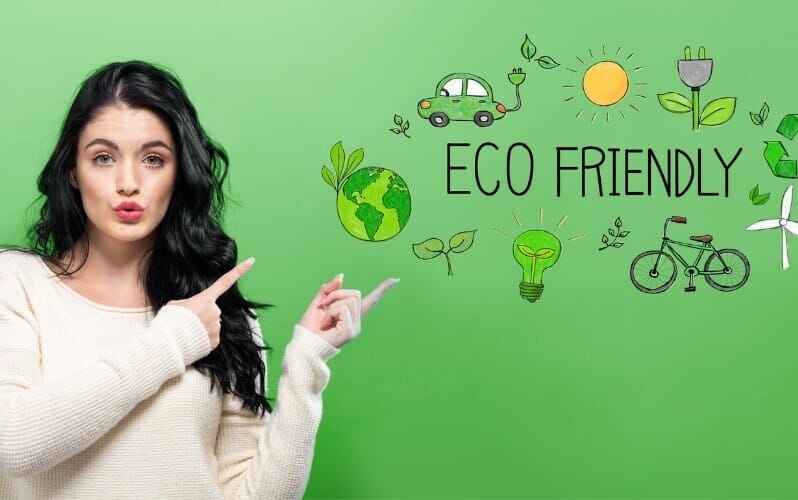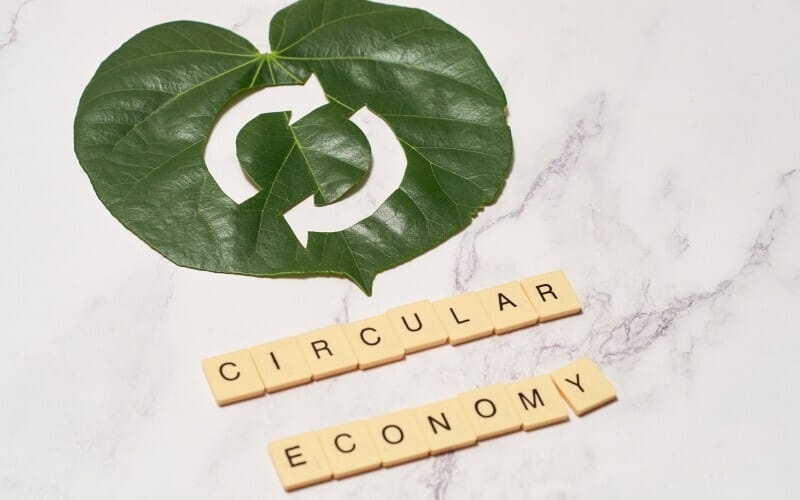The world needs storytellers now more than ever. As a filmmaker, you have the power to entertain, inspire action, and drive positive change. This guide explores 8 sustainable business ideas specifically for filmmakers who are passionate about using their craft to build a better future, turning their impact-driven visions into thriving enterprises.
Table of Contents
Filmakers as Agents of Change
The film industry has always held a mirror up to society, but its impact doesn’t stop at storytelling. These days, filmmakers have a unique opportunity to play a significant role in environmental sustainability. With the power to reach global audiences, you can inspire change and promote sustainable practices.
Filmmakers are increasingly stepping up as advocates for the planet, using their platforms to highlight environmental issues. There’s a growing trend of utilizing filmmaking not just for entertainment but as a force for good. This includes adopting greener production practices and supporting eco-friendly initiatives.
The intersection between filmmaking and impact-driven startups is particularly exciting. These startups often focus on innovative solutions for a more sustainable world. And you can align with them to create meaningful content. This synergy not only enhances your credibility as a filmaker; it also amplifies the reach of essential sustainability messages.
Understanding the potential of their influence, filmmakers are now exploring various ways to incorporate sustainability into their projects. This introduction sets the stage for discussing innovative ideas you can pursue to contribute to a better world. By leading with creativity, responsibility, and awareness, you can transform the industry into a beacon of environmental consciousness.
Eco-friendly Production Processes: Sustainable Film Sets
The film set is where the magic happens, but it can often come at a significant environmental cost. If you’re looking to make a difference, start by implementing eco-friendly production processes. Sustainable film sets focus on reducing waste, conserving energy, and using resources wisely, ensuring that the art of filmmaking doesn’t come at the expense of the planet.
A practical approach is to adopt green practices like recycling materials and using biodegradable products. For instance, switching to digital scripts and utilizing reusable water bottles can cut down on paper and plastic waste. Bringing on board a dedicated green supervisor can help manage sustainability efforts throughout production.

Some pioneering filmmakers are leading by example, transforming the way movies are made. They’ve introduced solar-powered trailers and electric vehicles on set, drastically lowering their carbon emissions. Integrating these practices requires commitment, but the environmental benefits make them worth considering.
Challenges, of course, exist. Budget constraints and logistical hurdles often come into play. However, many production teams have found success by securing partnerships with eco-conscious companies, gaining both financial and practical support.
The journey towards sustainable film sets might seem daunting, but with creativity and commitment, it is achievable. By sharing these strategies and successes, you not only enhance your projects’ environmental footprint but also set new standards for the industry.
Green Screen Technologies: Revolutionizing Visual Effects
Moving into the realm of visual effects, green screen technologies have emerged as a sustainable hero. This innovative tech cuts down on the need for physical set construction, thereby significantly reducing the consumption of materials and resources. With virtual sets, filmmakers can create expansive worlds without the environmental toll that typically accompanies traditional set builds. The shift towards using virtual environments champions sustainability and enhances creative possibilities.
Case studies reveal the effectiveness of integrating green screens in sustainable filmmaking. Productions have managed to achieve remarkable visual storytelling while slashing resource usage. It’s about working smarter, not harder, to create dazzling visuals that respect the environment.
Challenges lie in the initial setup and learning curve. However, once teams get the hang of the tech, the long-term benefits become clear. Lower transportation needs and reduced physical waste are just some of the perks. More filmmakers are now tapping into this potential, not only to tell their stories but to lead by example in ecological responsibility. By embracing green screen technology, they’re paving the way for a more sustainable future in film while inspiring others to follow suit.
Renewable Energy Solutions: Powering Productions Sustainably
In the pursuit of sustainable filmmaking, integrating renewable energy into production processes is a game changer. By adopting solar, wind, or other renewable sources, film productions can significantly reduce their carbon footprint and contribute positively to the environment.
Many forward-thinking filmmakers are already reaping the benefits of this approach. Solar panels on trailers and setups powered by portable wind turbines exemplify the shift towards clean energy. Not only do these solutions lessen environmental impact, but they also offer potential cost savings in the long run.
One of the biggest benefits of renewable energy is its ability to provide a consistent and reliable power source without the environmental cost of traditional fuels. Productions can maintain their energy needs while setting a benchmark for eco-friendly practices.

Implementing these energy solutions does come with challenges, including the initial investment and logistical complexities. However, by partnering with renewable energy companies or securing green energy grants, you can offset some of these costs.
Forward-thinking filmmakers are using their productions as platforms to showcase renewable energy’s viability. By making this commitment, they’re not just producing films; they’re producing a legacy of responsible and innovative filmmaking practices.
Sustainable Distribution Channels: The Rise of Digital Releases
Digital distribution is revolutionizing how films reach audiences, dramatically cutting down waste and emissions associated with traditional methods. By shifting to digital, filmmakers can significantly reduce the environmental impact tied to physical media production and distribution.
One of the major advantages of digital releases is the diminished need for physical materials like DVDs or Blu-rays. Less production equals less waste, which is a win for the planet. In addition, distributing films digitally means cutting down on the emissions from shipping physical copies worldwide.
The transition from physical to digital isn’t without challenges. Internet access and data consumption can be issues, particularly in regions with limited connectivity. Consider how to make your digital releases accessible while maintaining quality.
Success stories abound in this space, with several filmmakers successfully navigating the shift to digital. They’ve not only expanded their audience reach but have also set a precedent for eco-conscious distribution. By adopting digital distribution channels, you support a greener, more efficient way of getting your work to viewers. This method showcases your commitment to sustainability and can serve as an influential model for others in the industry.
Responsible Sourcing: Eco-conscious Costuming and Set Design
In the quest for sustainability, the materials chosen for costumes and sets play a pivotal role. Opting for eco-friendly and ethically sourced materials can significantly lessen the environmental impact of a production. Using sustainable fabrics made from organic fibers or recycled materials in costumes ensures that the fashion aspect of filmmaking does not contribute to pollution or waste. Additionally, considering second-hand or upcycled options can further reduce the carbon footprint.
Sustainable set design is equally impactful. By using recyclable materials or sourcing props and decor items responsibly, you can create visually stunning environments without depleting resources. Many successful productions have embraced borrowing, renting, or sourcing locally to minimize their environmental footprint. Building strong relationships with ethical suppliers can provide access to sustainable materials. Collaboration with these suppliers helps promote a culture of responsibility and encourages other vendors to adopt similar practices.
Real-life examples abound of productions where eco-conscious decisions in costuming and set design have not only reduced waste but also enhanced the storytelling by incorporating elements that are natural or historically accurate to the narrative. These choices reflect a commitment to sustainability without compromising on creative vision.
Community Engagement: Filmmakers Partnering with Local Ecosystems
Filmmakers have a unique opportunity to engage with local communities and ecosystems, creating benefits that stretch beyond the production itself. By partnering with local environmental initiatives, filmmakers can support and amplify efforts to preserve natural habitats and resources.
Choosing to film in a location often means impacting the surrounding environment. Involving local experts and organizations can guide you in making informed, sustainable decisions that respect and protect local ecosystems.

This collaborative approach ensures that the natural beauty seen on screen is preserved in real life. One effective strategy is to contribute to restoration projects or conservation efforts in filming areas. Whether it’s funding a tree-planting project or promoting awareness campaigns, filmmakers can leave a positive legacy in the locations they work.
Finding mutually beneficial ways to engage with communities not only helps the environment but also enriches the production itself. Local knowledge can add authenticity and depth to scenes, and partnerships can open doors to unique filming locations or resources.
There have been inspiring cases where films have bolstered local eco-tourism or educational programs by highlighting the region’s natural wonders. These efforts can create a lasting impact, encouraging sustainable tourism and economic benefits for the community. By promoting these collaborations, you demonstrate that your commitment to sustainability extends beyond your shoots, fostering a legacy of environmental respect and community support.
Education and Advocacy: Raising Awareness through Film
Films have the power to educate and advocate for change, making them ideal tools for raising awareness about environmental issues. Through compelling storytelling, filmmakers can inspire audiences to reconsider their actions and influence policy changes that benefit the planet.
Documentaries and narrative films alike have successfully highlighted pressing environmental concerns, offering not just information but calls to action. By focusing on relatable storytelling, filmmakers can connect emotionally with viewers, making the message more impactful.
A key approach is weaving environmental themes into the very fabric of the narrative. This can be done by featuring eco-conscious characters or focusing plots on sustainability challenges and solutions. It turns the film into a platform for education without overwhelming the audience with data or directives.
Successful films in this category often combine visual appeal with informed content. Beautiful cinematography of natural landscapes, backed by research and expert opinions, helps ground the narrative and lend it credibility.
To maximize impact, filmmakers should collaborate with environmental organizations or experts. This not only strengthens the film’s message but also provides additional channels for dissemination and advocacy post-release. These partnerships can include co-hosting screening events or participating in panel discussions.
Several films have already made their mark by galvanizing public sentiment and driving movements for environmental change. These set the stage for future filmmakers to continue exploring and expanding on these narratives.
Ultimately, films serve as a bridge between complex scientific concepts and the general public, translating abstract issues into stories that drive home the urgent need for action.
Building a Sustainable Future: Filmmakers and Impact-driven Startups
Filmmakers have always been visionaries, but now, more than ever, they have the chance to extend their creative reach beyond the silver screen by partnering with impact-driven startups. These collaborations allow filmmakers to tackle sustainability challenges head-on, resulting in innovative solutions that transcend traditional filmmaking boundaries.
Impact-driven startups often focus on developing new technologies or practices that address environmental concerns. By collaborating with these startups, you can gain access to cutting-edge solutions that enhance production processes and reduce environmental footprints. This partnership can lead to the creation of content with an authentic sustainability message, backed by real-world applications.
Exploring partnerships with eco-focused startups opens doors to new business ventures for filmmakers. Whether it’s developing sustainable film technology or launching a platform for eco-conscious content, the opportunities are vast and varied. These ventures not only contribute to environmental well-being but also pave the way for you to diversify your offerings and revenue streams.
Some filmmakers have successfully forged these partnerships, resulting in innovative products and platforms that benefit both industries. These alliances highlight the potential for mutual growth and demonstrate the impact of creativity combined with sustainability-driven innovation.
Looking ahead, you’re well-positioned to be at the forefront of the sustainability movement within the entertainment industry. By continuing to engage with impact-driven startups, you can inspire meaningful change and help shape a future where sustainability is a cornerstone of filmmaking. These efforts not only redefine what is possible in film; it set a powerful example for industries worldwide to follow.




